Case Study

Find Out…
How Earthfire Institute partnered with Prosper Strategies to build out their messaging, attract key donors and develop a strategic plan.
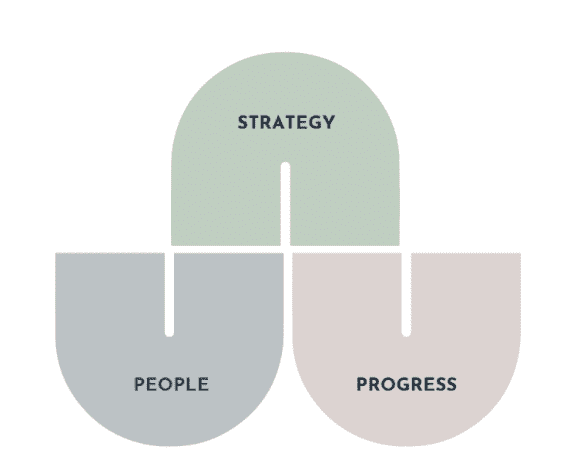
The Challenge
Earthfire Institute is a wildlife sanctuary nestled in the foothills of the Grand Tetons. The organization approached Prosper Strategies with bold ideas and a significant fundraising goal to support them. With more than 20 years of experience learning intensely from their resident animals, Earthfire Institute was ready to expand its mission well beyond a place-based approach. Their aim was to spark a movement to bring people, animals and nature together to reawaken our deep connections to all living beings, and move us to save habitats for wildlife. They coined the concept of Reconnection Ecology®.
With anticipated growth on the horizon, Earthfire Institute needed to clarify their messaging, align their team around the same goals, and understand their donor audiences, so they could reach supporters in new and different ways.
Prosper Strategies used the Nonprofit Strategy System™ and our Shared Power Strategy™ philosophy to help Earthfire Institute chart their course. We worked with the organization to establish a reason for being, and align their mission to their ambitious goals. We also developed messaging that would help them not just reach their donors where they were, but also motivate them to take action. And, we developed a strategic plan to bring their vision to reality. Finally, we created marketing and fundraising campaigns that were as powerful as their desire to mindfully save habitat for all living beings.
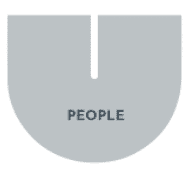
People
Developing successful strategies relies on engaging the right people in the process at the right times, which is why we leveraged our Shared Power Strategy™ philosophy in our work with Earthfire Institute.
This began by spending two days at Earthfire Institute interviewing various staff members and getting to know the resident animals so we could uncover areas of strength and opportunity. We also worked with the Earthfire Institute team to identify others who were critical to the organization’s mission, this included board members, funders and partners. We developed a project plan that ensured these individuals participated in stakeholder interviews and also had opportunities to provide perspective at pivotal points in our process, including mission and messaging development as well as overall organizational direction.
When it came to our strategic planning, we took an internal look at the organization’s current staff and structure. We identified areas where new roles would need to be added and what those roles would need to be in order to fulfill the goals in the strategic plan.
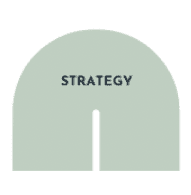
Strategy
While creating a roadmap for stakeholder engagement was critical for Earthfire Institute, we also conducted research that would inform our approach to helping the organization build their strategies.
In addition to the two days we spent at the property, we conducted an organization assessment where we reviewed their previous strategic plan, marketing and fundraising materials. Then we conducted an ecosystem assessment, where we looked into other organizations in Earthfire Institute’s space to determine differences and similarities.
Our research uncovered that Earthfire Institute was the only organization in its space that had both a physical location and a significant digital presence that allowed people to connect with their mission regardless of where they were located. This provided the organization with the unique opportunity to not only serve as a model for how people, nature and animals can live in harmony, but also help others to connect with wild animals to understand their individuality. We used these insights to develop Earthfire Institute’s reason for being.
Then, we worked with their team to rewrite their mission statement to align with their organizational goals. We also developed stakeholder profiles, key messages and key messages by donor audience for use across all of Earthfire Institute’s marketing and fundraising materials.
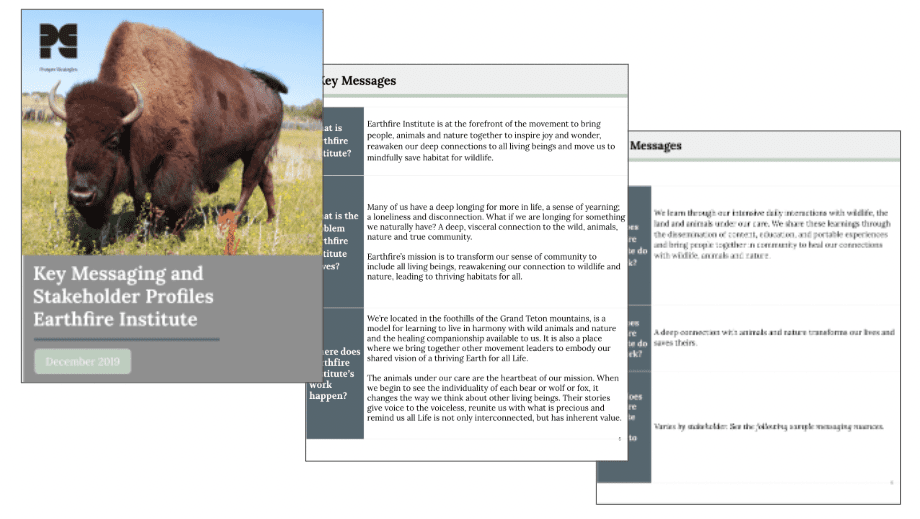
Then, we transitioned to strategic planning with Earthfire Institute. This required us to solidify the organization’s pillars, which included:
- A master plan for the Earthfire Institute property, including new infrastructure and expansion, as well as land conservation
- Efforts to ensure long-term organizational sustainability
- The launch of a formal media network to expand awareness of their mission and more deeply engage supporters
In addition to the strategic plan, we developed a year-long marketing plan, complete with a tactical mix designed to help them meet both their marketing and fundraising goals, along with a marketing budget to support their efforts.
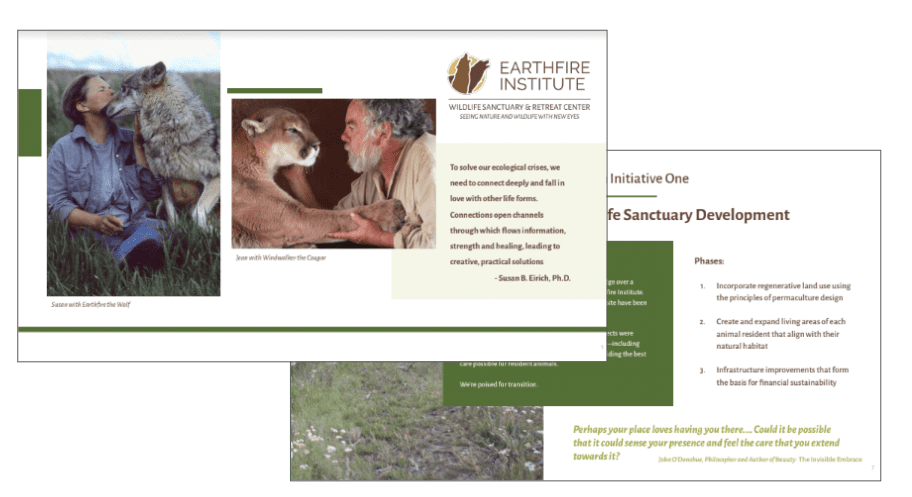
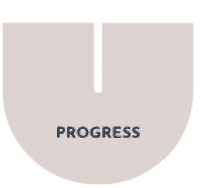
Progress
To ensure Earthfire Institute’s strategic planning goals would be met, we developed specific objectives and key results on an organization-wide level, as well as for individual staff members. We also developed a marketing key results dashboard, so they could measure their performance against the benchmarks set when our work first started.
When it came to bringing their new messaging to life, we provided them with sample key messaging applications, so they could see exactly how to apply their new messaging to their existing collateral. We also collaborated with the team to provide insights and input on materials needed for major donors, including a case for support.
Results
From the time period of April 2020 to March 2022, Earthfire Institute is making measurable progress on their strategic plan and has secured 202 new donors, 200 recaptured donors (donors lapsed for a minimum of 2 years), and 88 upgraded donors (donors giving more than the prior year). As a group, these three donor tiers accounted for 83% of total donations in 2020, and 76% in 2021. Donations from 2015 to 2018 averaged $206,200 – in 2021, $970,000 was raised in just one year and the organization anticipates raising $4 million in 2022.